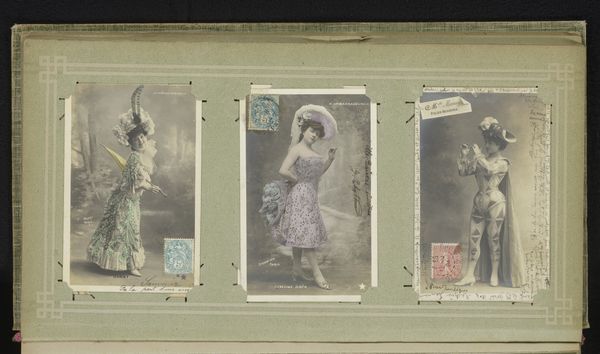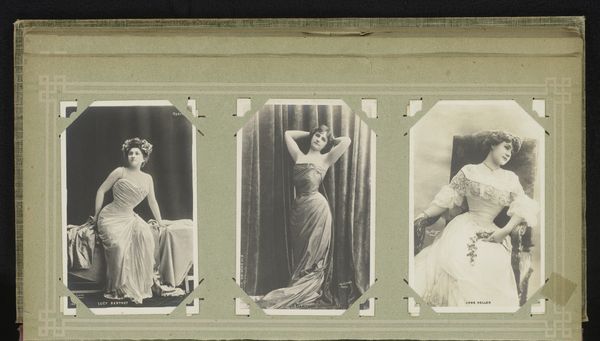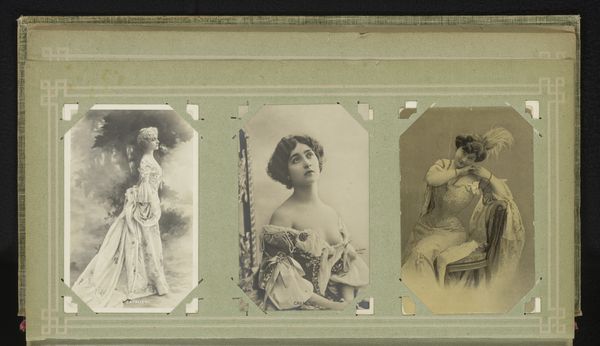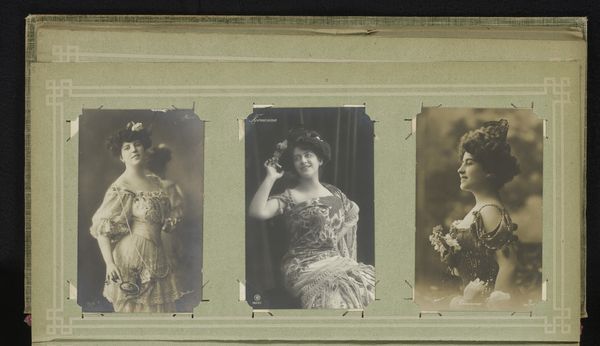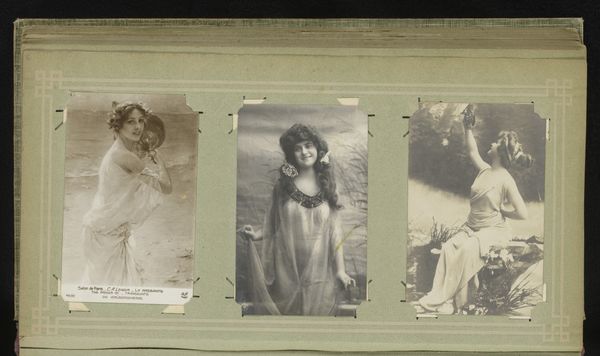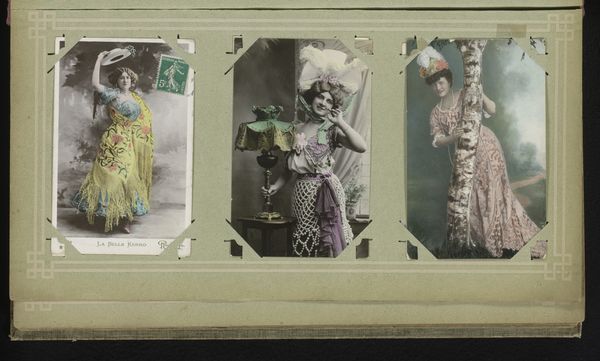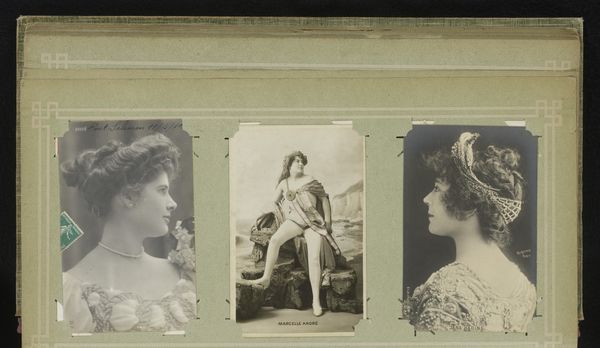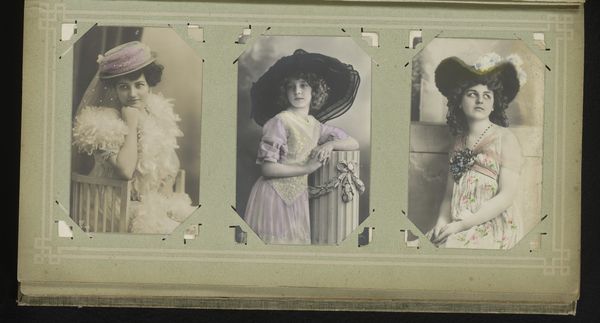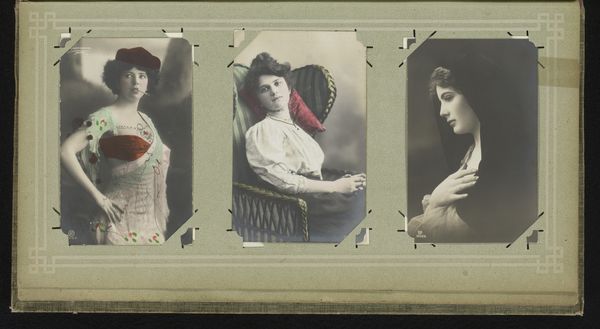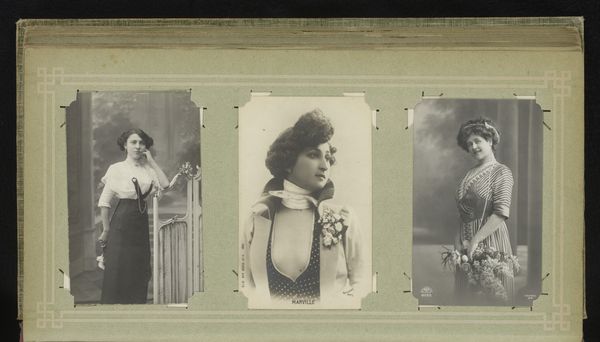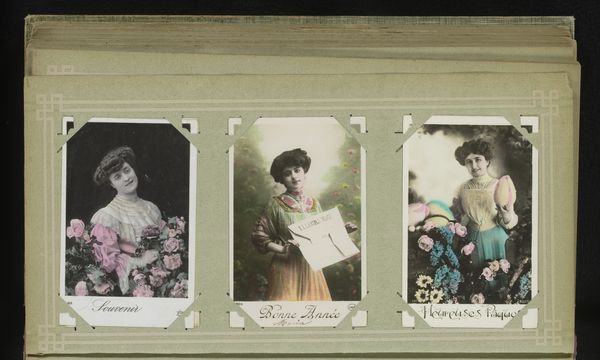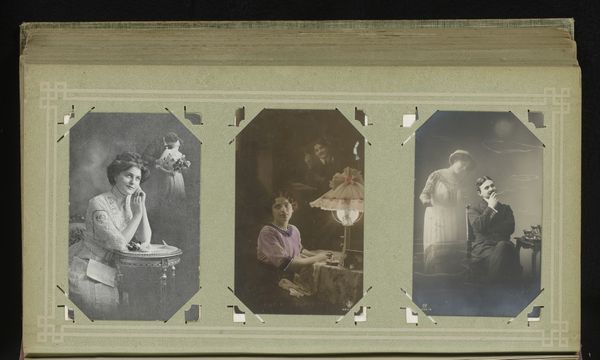
photography
#
portrait
#
photography
#
decorative-art
#
decorative art
Dimensions: height 196 mm, width 368 mm
Copyright: Rijks Museum: Open Domain
Editor: Here we have "Three Portraits of Actresses" by Walery, dating from between 1900 and 1930. These photographic prints, housed at the Rijksmuseum, feel so ornate! I’m drawn to how each figure fills its individual frame, each pose feels theatrical and carefully constructed. How do you interpret these portraits through a Formalist lens? Curator: The immediate impact derives from the formal arrangements within each photographic frame and then, subsequently, their organization within the album itself. Consider how the contrasting shapes direct the viewer’s eye. For example, observe the curvilinear dress forms contrasted against the rectilinear photographic borders. How does that visual tension influence your reading of the subjects, given the potential inherent narrative conveyed by their placement in the album? Editor: That’s fascinating. I hadn’t really noticed the play between those lines and shapes. It almost seems like the strict rectangular framing enhances the flamboyance of the women within the pictures. But why juxtapose those different forms and the visual tension it creates? Curator: Exactly! What effect is created by containing each portrait and pose in an isolated rectangle of its own? Consider how each portrait emphasizes very particular textures, ranging from gossamer thin to robust. Do these elements contribute to a cumulative experience? Or perhaps each element serves a purpose to stand apart and be self-referential to only its photographic form? Editor: The more I look, the more I see these very contained moments, expertly composed to convey so much within a small space. This interplay of shape and form really does change how I perceive these photographs. Curator: And it invites us to look at the album not merely as a historical document but as a meticulously arranged work of art in itself, doesn't it? Each shape, texture and tonal scale is deliberately working together within its photographic border to define the ultimate essence. Editor: It definitely does. Looking at the form of it has really helped me see past the surface of what these photographs depict. I see an inherent harmony as well!
Comments
No comments
Be the first to comment and join the conversation on the ultimate creative platform.
